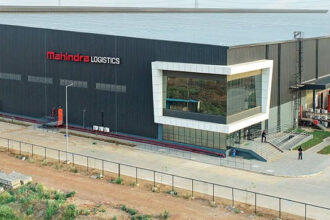In an era of interconnected global economies, supply chain resilience is more critical than ever for multinational corporations. However, navigating the complexities of modern logistics has become increasingly challenging due to a confluence of unprecedented risks. Here’s a closer look at the most significant supply chain chaos and strategies to mitigate them effectively.
1. Material and Component Shortages
Even three years after the onset of the COVID-19 pandemic, supply chain leaders continue to grapple with shortages of critical goods. Factory shutdowns, labor shortages, and disruptions at ports have created cascading effects, particularly for industries relying on semiconductors, raw materials, and specialized components. For example, the scarcity of neon gas—used in semiconductor manufacturing—due to the Ukraine war underscores the fragility of global supply chains reliant on single-source materials.
2. Geopolitical Disruptions
The war in Ukraine and escalating geopolitical tensions have intensified risks for supply chains. For instance, the war has diminished Ukraine’s steel exports by over 60% and restricted the global supply of essential commodities like natural gas and metals. Companies heavily reliant on Russian imports of nickel, platinum, and aluminum have faced skyrocketing costs and supply gaps.
3. Energy Crises
Europe’s energy vulnerability became evident when sanctions on Russia disrupted the natural gas supply. This shock caused cost inflation across industries and even led to temporary shutdowns of high-energy-demand sectors such as cement production. Businesses must brace for such energy-related disruptions as geopolitical uncertainties persist.
4. Labor and Transportation Issues
Labor shortages in transportation, combined with infrastructure constraints, have further strained global supply chains. Port congestions and a lack of seafarers—exacerbated by conflicts and pandemics—have slowed the movement of goods. In many cases, businesses are still recovering from bottlenecks created during early pandemic shutdowns.
5. Natural Disasters and Climate Change
From the closure of Germany’s Rhine River due to drought to earthquake-induced disruptions in Turkey and Syria, natural disasters are becoming increasingly frequent and impactful. Climate change is expected to worsen these events, forcing companies to integrate resilience into their logistics plans.
Proactive Strategies for Risk Mitigation
To counter these challenges, companies must adopt robust strategies:
- Supplier Diversification: Relying on geographically diverse suppliers ensures continuity even during regional disruptions.
- Enhanced Inventory Management: Maintaining higher inventory levels can act as a buffer against supply fluctuations.
- Risk Mapping: Mapping critical suppliers and assessing their vulnerabilities helps anticipate potential disruptions.
- Investment in Technology: Advanced telematics and data analytics improve visibility and responsiveness in supply chain operations.
- Scenario Planning: Businesses should develop contingency plans for energy crises, labor shortages, and geopolitical conflicts.
The Path Forward
Supply chains are no longer just operational backbones; they are strategic assets that directly impact an organization’s resilience and profitability. By investing in risk management frameworks and leveraging innovative solutions, multinationals can safeguard their supply networks and maintain competitive advantage amid global uncertainties.
For businesses navigating today’s volatile landscape, staying proactive is not just a choice—it’s a necessity. Embracing resilience through thoughtful planning can turn potential risks into opportunities for growth.






